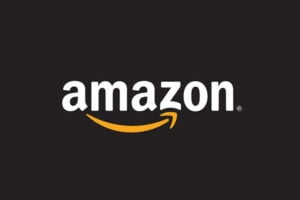Sellers’ ability to rank on Amazon depends greatly on their products’ niche subcategory as well as their sales performance. It takes time for a product to work its way up on Amazon’s search engine results pages (SERP). However, knowing Amazon SEO drivers can accelerate this process.
This puts a question mark on how can sellers promote their product discoverability to stay visible on Amazon?
This is a series of three articles, also read Understanding Amazon ranking factors and Amazon SEO Third party tools.
Factors Related to Performance
1. Sales Performance History
According to The Amazon SEO Playbook report by Feedvisor, the more sales sellers produce on Amazon, the higher they will rank. A high sales velocity is immensely beneficial to Amazon, so the algorithm will analyse sales results and increase the rankings for the products that sell well.
With a higher conversion rate and increased sales velocity, sellers will accelerate additional sales and generate positive customer reviews, fueling the flywheel effect.
If sellers are working with new products and need to build up sales, they can experiment with Amazon pay-per-click (PPC) campaigns, running a giveaway promotion or offering a percentage off, and ensuring that they are priced competitively.
2. Price
The prices that seller set for their Amazon products can greatly impact their conversion rate and sales performance.
Sellers need to regularly do a competitive analysis to understand at what prices points their competitors, both and off of Amazon, are listing similar products. By maintaining that balance on an ongoing basis, their conversion rate should be positively impacted, which can, in turn, improve their organic ranking.
3. Product Availability
A product’s in-stock history can certainly aid in determining product ranking for any given product search.
A prime example would be increasing prices to conserve the remaining inventory which will take a negative hit as a result. With higher prices, sellers sales volume and conversion rate will decrease, which can, in turn, damage your ranking position.
Sellers can only increase their prices for so long until either the product completely goes out of stock or sales come to a complete halt. Once the product is back in stock, merchants keyword rankings need to build themselves back up to where they were before the price increases and stockout. Products can regain their previous rankings after they are restocked, as long as sales can be generated in a timely manner.
While low stock levels can directly lead to a decrease in sales and a lower conversion rate, having surplus inventory can result in many hidden expenses. These expenses include long-term
storage fees, obsolescence, loan interest, and alternative costs of not investing in new products. Inventory levels impact not only your sales but also your expenses.
Replenishing top selling items is a low-hanging fruit process that can be taken care of on a weekly basis by reviewing sellers top 20% of selling goods estimate how much inventory they need to order before going out of stock. Running out of stock means 0% Buy Box and no conversion.
4. Product Images
Although images are not a direct, performance-related Amazon ranking factor, they play a critical role in both click-through and conversion rates. Generally, the higher these metrics are for a certain keyword, the higher the merchants’ product will rank in search results for that keyword.
Sellers’ product images are shown when the customer clicks through to the detail page. Merchants can showcase seven to nine images related to the product at hand and they should meet
Amazon’s image requirements.
If possible, sellers should allow the zoom function to work on the images and show the product from multiple angles as well as in use to help the customer understand what it would actually be like to buy and use the product.
5. Customer Reviews
Reviews are another indirect factor that can impact the sellers’ products’ rank on Amazon. Customer reviews can significantly influence the conversion rate, which demonstrates their important role in Amazon SEO. Products with strong ratings such as four stars or higher are more likely to rank higher in Amazon search results than those with less than four stars.
The report says that 79% of consumers go to Amazon prior to making a purchase. This means that merchants should constantly monitor their reviews to ensure customers do not abandon their potential purchase due to a negative review.
Responding to negative reviews in a timely fashion is vital. This will show the prospective customers that sellers value their time and experience with their products, as well as maintaining a positive overall customer experience.










